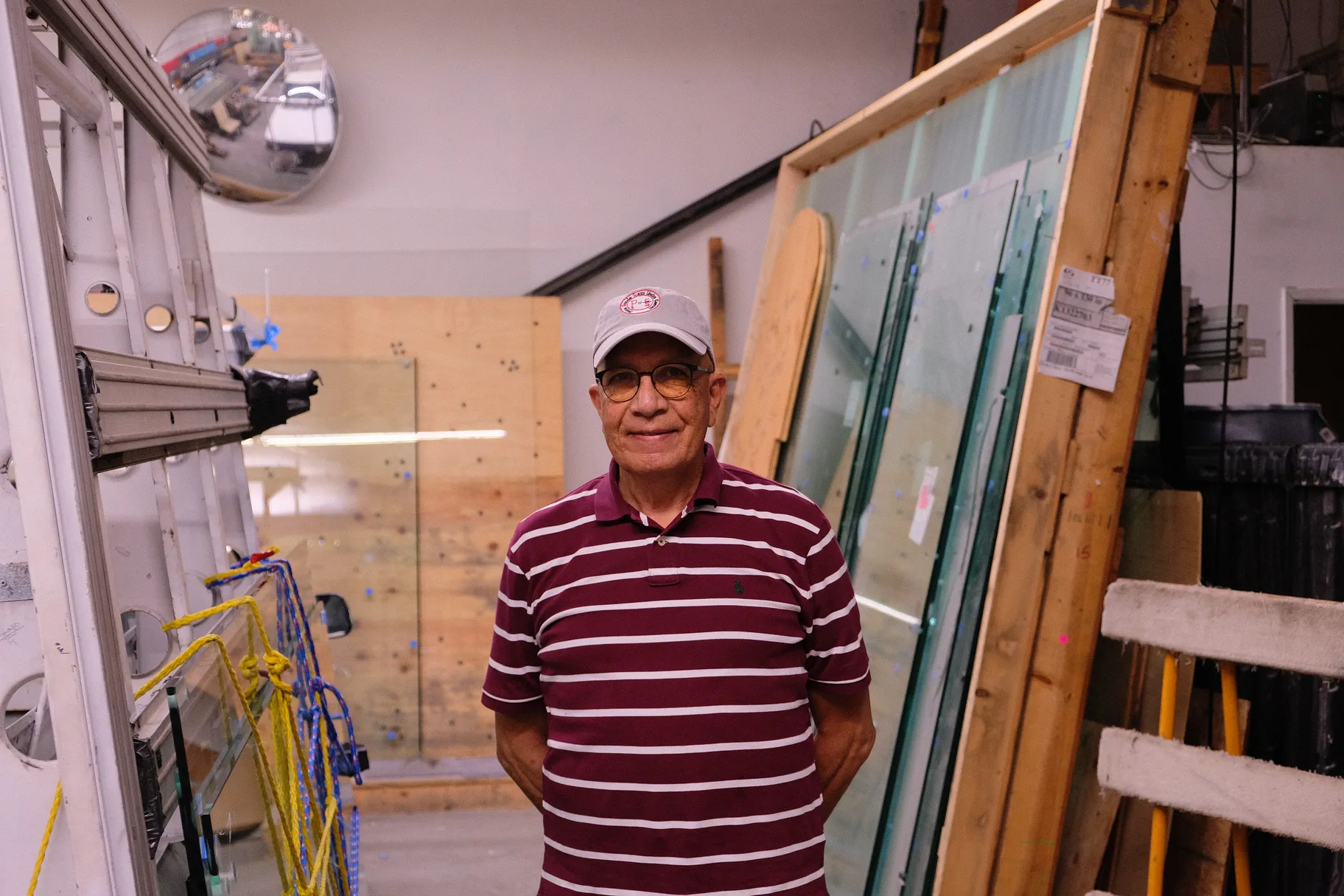Carol Menke is one of just 222 people who live in Vernon, a five-square-mile city just south of Downtown LA. Despite its tiny population, she says the city doesn’t exactly have a small town feel.
“You're likely to walk out in the middle of the street and get run over by a truck – and I mean an 18-wheeler, not a little truck.”
Some 45,000 to 50,000 people commute into Vernon every day. It’s home to factories, railyards, sprawling electrical substations and meatpacking facilities. The city even has the words “exclusively industrial” embossed on its seal. However, a new zoning ordinance is set to add up to 874 apartments to Vernon, more than quadrupling the city’s population.
For most of Vernon’s recent history (the city was incorporated in 1905), such a change would be unheard of. A small population was great for city politicians. The votes of just a handful of relatives and friends could secure an election, and council members could pay themselves high salaries, and control lucrative city jobs without the fear of losing reelection.
Not only did Vernon limit its housing, but the city owns much of what housing there is. That can be useful if you want to bully electoral challengers. A 2006 LA Times investigation found that, for years, Vernon officials harassed or even evicted those who disagreed with them, including residents who tried to run against the mayor and council.
Then in 2011, after a former mayor of Vernon and his wife were convicted of voter fraud, the state of California threatened to dissolve the city. Fearing for its survival, Vernon adopted term limits and capped salaries for council members. In 2015, it opened a 45-unit housing development that doubled the city's population from 100 to 200.
The new zoning changes, which went into effect on September 1 of this year, are concentrated on South Santa Fe Avenue, near the city’s border with Los Angeles. In addition to housing, the new ordinance also approves small-scale commercial uses like offices, art studios, and coffee shops. Vernon Mayor Crystal Larios says she’d like to see the area “serve as an extension to the success of LA’s Arts District.”
The City Council won’t directly be able to approve or deny a project, as long as it meets development standards and requirements.
“It removes the discretionary component from policymakers,” Larios says.
New apartments are already in the planning stages. On a busy Thursday afternoon, Dan Wall, Vernon’s director of Public Works, points out a 59,000 square foot warehouse built in 1920.
“This building was recently purchased by a developer who would like to make this be primarily residential, without changing the building very much.”
“He has plans to put a roof deck on that flat portion of the building to provide amenities for future tenants,” Wall says.
It will take more than a roof-top deck for this section of Vernon to start to feel like LA’s bustling Arts District, but people who work in Vernon, like Manny Liquidano, could benefit from housing nearby.

Manny Liquidano owns the Vernon-based business called Glass LA Design. Photo by Jackson Cantrell.
Liquidano owns Glass LA Design, a residential shower door and window supplier. He says his employees have a lot of trouble finding housing.
“There are not enough single one-bedroom apartments or anything like that for workers. Even if it's expensive, we cannot find anything.”
Even with new zoning — and the threat of disincorporation gone — it will still take time, creativity, and money to transform Vernon. When the dust settles, the 1,000 or so new residents will go a long way to making the city feel like a normal place to live.
